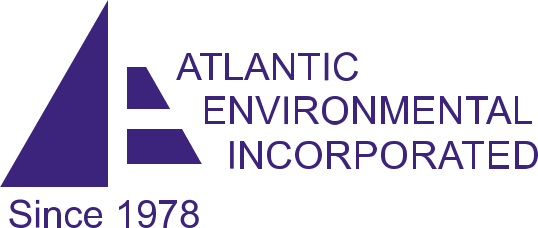If you need silica testing/sampling as discussed in this article, call us at 973-366-4660 or e-mail us at info@atlenv.com for details and a free estimate.
Written By: Robert E. Sheriff, MS, CIH, CSP, President
March 6, 2020
Silica Exposure to Workers in Oil and Gas Hydraulic Fracking
Silica exposure to workers is nothing new. Also hydraulic fracturing or “fracking” is nothing new either. What’s new is the number of workers exposed to high levels of crystalline silica as the oil and gas “fracking” industry has gone into high gear.
The use of a large volume of sand as a proppant—to “prop open” the fractured rock that allows oil and gas to flow more freely has gone from a few such locations to hundreds, if not thousands of well sites. (In 2012, there were 22,326 hydraulic fracking wells drilled or permitted).
The National Institute of Occupational Safety and Health (NIOSH) has estimated that as many as 1.7 million workers are exposed to crystalline silica each year.
Silica Regulations
OSHA has lowered the PEL to 50 ug/m3 and an Action Level of 25 ug/m3. The new Silica regulation is 29CFR1910.1053 which is for the General Industry and thus applies to oil and gas. The regulation is now in effect but there are extensions to the enforcement requirements for engineering controls to June 23, 2021, for the Oil and Gas Industry. (SPECIAL NOTE: THIS DATE IS FAST APPROACHING!)
The process of preparing the proppant involves large quantities of sand that must be quarried, sized, cleaned, transferred, mixed, prepared, and injected into the wells which creates many stages where workers can be exposed to the crystalline silica-containing sand. These stages include quarries, sorters, trucks, roadways, conveyors, blenders, pump stations, and the wellhead. Each stage has its unique problems in controlling the silica dust and the workers’ exposures. OSHA Industrial Hygiene Surveys have resulted in over 60% of the workers in this multitude of tasks being overexposed to silica.
Many oil and gas wells are located in the Marcellus Shale Foundation in the Eastern Midwest (Pennsylvania, New York, Ohio, West Virginia and Maryland) and in Texas, Oklahoma, and North Dakota, but records indicate that hydraulic fracking wells are present in at least 17 states.
Health Hazards of Silica Exposure
The health hazards of the crystalline forms of silica—if inhaled—is mostly due to the damage to lung tissue. The rigid sharp silica crystals cause lung damage, scarring, inflammation, and autoimmune disease. The resultant silicosis can cause irreparable damage resulting in COPD, lung cancer, and potentially death.
3 Forms of Crystalline Silica
There are actually 3 different forms of crystalline silica: alpha quartz, cristobalite, and tridymite. The new standard considers all 3 to have the same PEL—although toxicology information suggests that cristobalite and tridymite are more virulent in causing silica-related disease.
The work activities most likely to result in worker overexposure to silica are sand quarrying, sand mover vehicles, sand mover belts, sand mover conveyors, mixing/blending operators, at the wellhead, and even road construction personnel exposed to road dust. All of these activities can involve heavy exposure to crystalline silica unless efforts are instituted to control the dust.
Sampling and Control
The method for sampling of workers by an industrial hygienist is not difficult. There are a variety of sampling devices available—worn by the individual workers—that can collect respirable dust samples which can then be analyzed by an American Industrial Hygiene Association (AIHA) accredited laboratory. The sampling can cover a short term activity or a full work shift.
Methods of dust control and worker exposure control are more complex and varied.
Change to less dusty methods, ventilation, and substitution of less hazardous materials, equipment modification, wet methods of handling, enclosure, and finally respiratory protection (only recommended as an interim control method or as a supplement to other engineering or administrative controls).
Some technologies are emerging to better control silica dust at each stage of the proppant process but these technologies need to be monitored to confirm their ability to reduce worker exposure to silica and the prospect of developing silicosis, lung cancer, and the other diseases associated with the fracking process. It would be tragic to develop a substitute process that simply adds another health/safety hazard to the workers’ risks.
For more information or a quote for monitoring or other services, contact us at 973-366-4660, email us at info@atlenv.com, or you may fill out our online form.
Our primary service areas are New Jersey NJ, New York NY, (New York City), Pennsylvania PA, Connecticut CT, Delaware DE, Massachusetts, (Boston) MA, Rhode Island RI, Washington DC, Wisconsin WI, Maryland MD, Michigan MI, Illinois (Chicago) IL, Virginia VA, Indiana IN, Georgia (Atlanta) GA, Alabama AL, North Carolina NC, South Carolina SC, Tennessee TN, Texas (Dallas, Ft Worth) TX, Oklahoma OK, DC, Arkansas AR, Florida FL. We can service most other areas of the U.S. but with some added travel charges.



